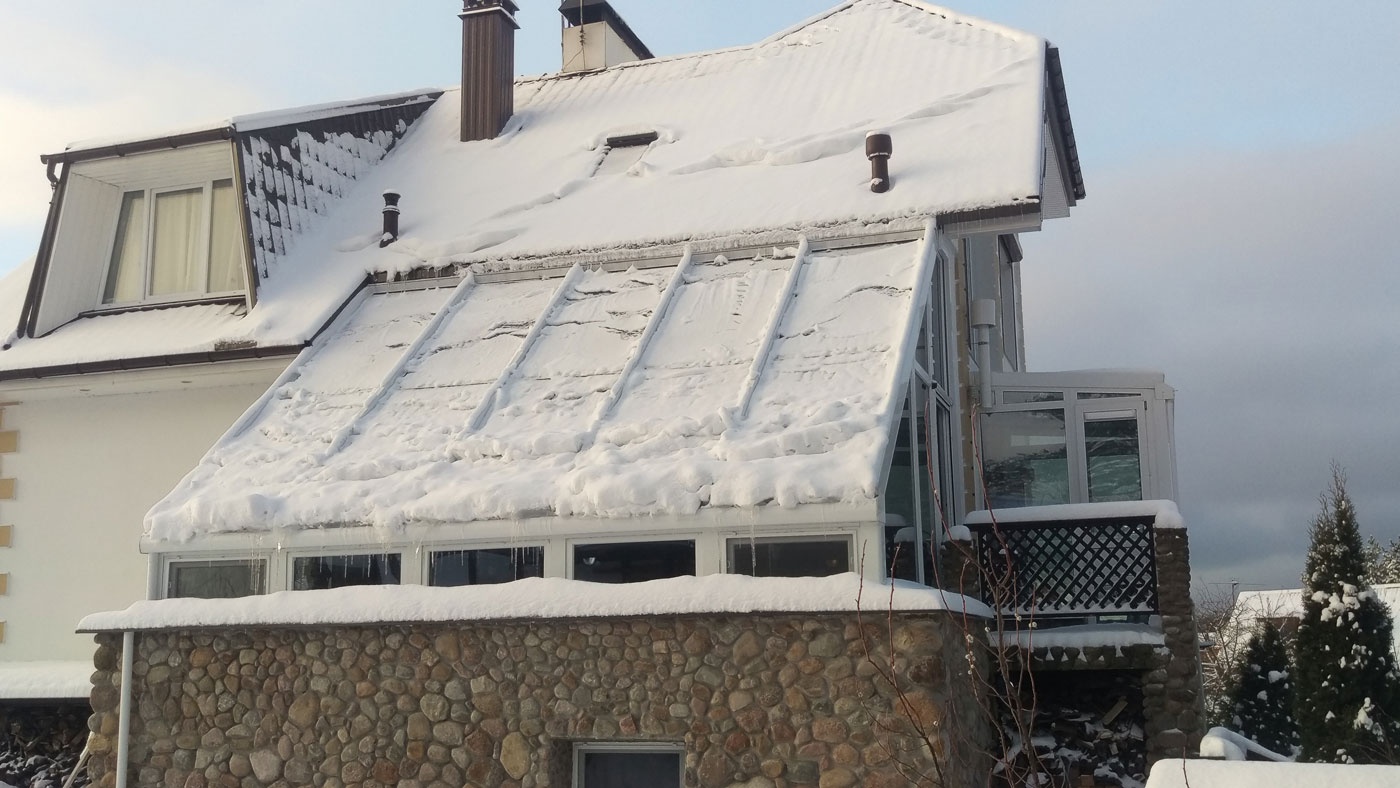Calculation of snow load according to DIN EN 1991 (Eurocode 1)
Until 2012, DIN 1055 was the authoritative set of rules for effects (for example snow and wind) on supporting structures (e.g. roofing and conservatories). In 2007, DIN 1055 was largely amended in many points. For example, until 2007 a snow load of 75 kg/m² applied in large parts of Germany. From 2007, not only is a distinction made between characteristic snow load Sk (approximately: ground snow load) and roof snow load, but the geographical division of Germany into snow load zones itself underwent major changes. In addition, the consideration of snow accumulations has been mandatory since 2007.
In 2012, DIN 1055 has been incorporated into the European standards (DIN EN). DIN 1055 has since been withdrawn. The DIN-EN 1991 (Eurocode 1) with the national annexes is the authoritative set of rules for actions on structures.
Here is an example of how the snow load is calculated. For this we need the following information:
Size of the roofing: 6000 x 4000 mm. Height VHF 2700 mm, height VHF 2100 mm. Place of installation: 59602 Rüthen Height above zero: 380 m and installation of the roofing on the ridge side of the house, distance between OKW and ridge: 5000 mm.
First we determine the snow load zone. For this we need to know in which district the place of installation is located. Here: district of Soest. Now we use the official table from the DIBt to determine the snow load zone. In this table we also find the information whether the construction site is located in the North German Lowlands (NDTL). If so, then the value for the snow load is to be multiplied by the factor 2.3. But in our case the place of installation is not in the NDTL. The district of Soest, municipality of Rüthen, is located in snow load zone 2. For snow load zone 2 (without NDTL) a characteristic snow load of 85 kg/m² applies, up to a height above sea level of 285 m.
However, our installation site is located at 380 m above sea level. We now use the formula S_k= 0.25 + 1.91 x ((A+140)/760)², where A stands for the height above sea level. This gives us the result 115 kg/m² (characteristic snow load Sk), also called ground snow load. Without taking the snow accumulation into account, we would now multiply this value by the reduction factor 0.8 (for roofs with a pitch of up to 30°) and arrive at a value of 92 kg/m² (snow load S0 or SD). The snow accumulation to be taken into account is determined using a different formula. For our example, this results in an additional load of 109 kg/m².
The total snow load to be considered for our example is 201 kg/m².
We base our offer on this weight and select the profiles and/or steel reinforcement accordingly.
For you this means: planning security. You can always be sure that the object will meet all static requirements.
As you can see from the example calculation, it is not possible to make a blanket statement in the form of “in district xy always applies 75 kg”. This is the main reason why so-called type statics are no longer praticable today and why it is inappropriate to create price tables for certain snow loads: One is practically always wrong. Either too much or too little snow load has been considered. With the current regulations, 2 roofs will hardly result in the same snow load value, even if these roofs are installed in the same street.
You can give us a value for the snow load (for example 75 kg/m²), then we use this value for the selection of the profiles and steel reinforcements. This can result in the profiles/steel reinforcements to be used being smaller and the steel reinforcements possibly being omitted completely. This in turn can lead to a decrease in the offer price.
However, a higher snow load does not automatically mean that the profiles and steel reinforcements become larger and therefore more expensive! This depends on many factors, for example the roof geometry and size. In addition, the snow load can be reduced, for example, by using snow guards or other measures!
Please note that it may not be possible to create a statics if you give us a snow load! Furthermore, in this case you must deal with the question of liability and your conscience.
Further information on Statics


